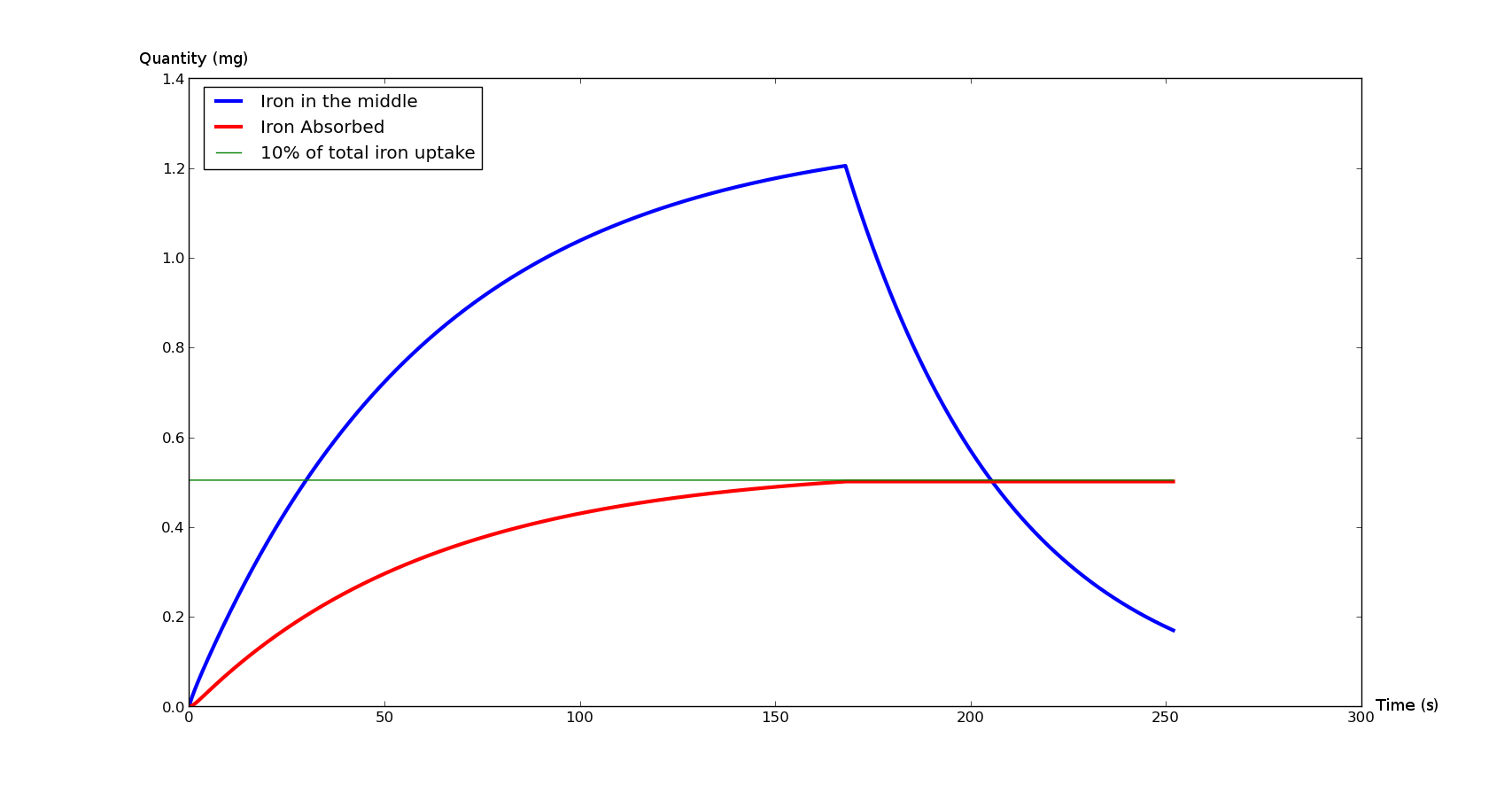Team:Evry/Modeltr1
From 2013.igem.org
Disease model
Introduction
In the very beginning of the project, we focused on the duodenum and the iron absorbed by it. In order to determine if a flush treatment strategy was viable, we first had to model the behaviour of the duodenum regarding iron absorption.
Observations
60% of iron absorption takes place in the duodenum, the last 40% in the jejunum. The duodenum is located at the upper intestines, right after the stomach, and is usually 300mm long.
A healthy person absorbs about 10% (2mg a day) of the daily iron uptake, while a hemochromatosis person's absorption varies between 50% and 100% of the daily iron uptake[1].
Goals
Our goal in this part of the model is to create a generic duodenal iron absorption model so that:
- We can have a realistic base for the Final flush treatment model
- The model can can be reused in the future
Assumptions
- Our bacteria don't settle in the duodenum
- No regulation in the patient's iron absorption
- Constant iron flow
- Homogeneous fluid
- The bacterial quantity is constant
- The bacterial natural absorption is insignificant compared to the chelation
- The patient ingests 20mg of iron per day (Guideline Daily Amounts)
Materials and methods
The duodenum is considered as a cylinder in which a homogeneous fluid flows. So, this model is divided into three steps: the filling of duodenum, the steady state flowing step and the emptying.
This model has two variables : the iron disolved in the middle (S) and the absorbed iron (A).
We considered a constant iron pulse every second arrive in the duodenum. S has a linear component Sp which represents the pulses. We also have the emptying component and the absorption component.
We assume a linear absorption and a negative feedback regulation for A.
Finally :

| α | s-1 | Duodenum absorption rate |
| v | m/s | Chyme's flow average speed |
| L | m | Duodenum length |
| Sp | mol/s | Iron pulse |
We have
Results
Conclusion
Models and scripts
 "
"
















